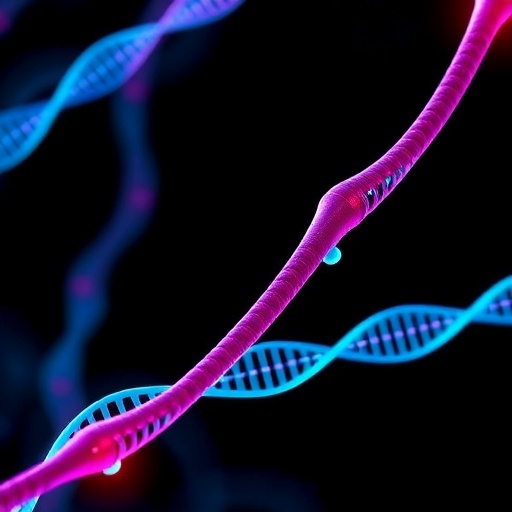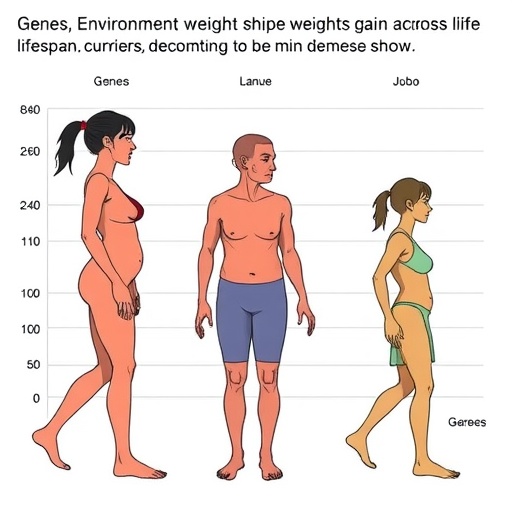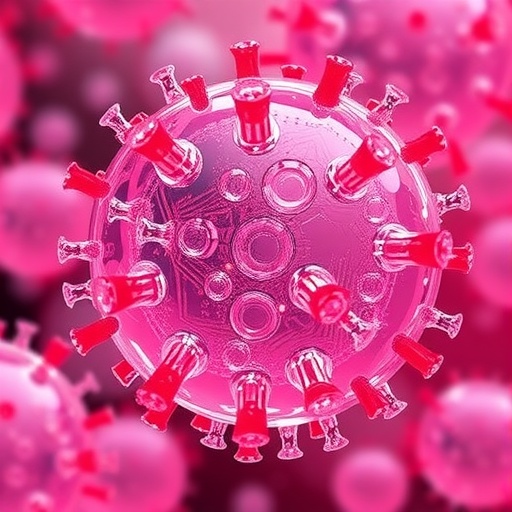In recent years, the exploration of extracellular RNA (exRNA) has surged to the forefront of molecular biology, heralding a new era of biomarker discovery and precision medicine. The exRNAQC Consortium’s latest comprehensive study, published in Nature Communications, offers groundbreaking insights into optimal blood collection and RNA purification protocols, revolutionizing the landscape of extracellular RNA transcriptome profiling. As the scientific community races to harness the diagnostic and therapeutic potential embedded in exRNA signatures, the consortium’s recommendations arrive as both a beacon and a call to standardize methodologies across laboratories worldwide.
Extracellular RNAs—fragments of RNA found outside of cells in bodily fluids such as plasma and serum—carry critical information about cellular state and health. They are encapsulated in vesicles, bound to proteins, or associated with lipoproteins, allowing them to remain stable in circulation despite the harsh extracellular environment. This stability makes exRNAs promising candidates for non-invasive biomarkers in diseases ranging from cancer to neurodegeneration. Yet, capturing accurate exRNA profiles hinges on meticulous protocols for blood collection and RNA purification, areas notoriously prone to variability and experimental artifacts.
Prior to this consortium’s work, researchers faced significant challenges in comparing data across studies, largely due to inconsistencies in pre-analytical variables like blood collection tubes, anticoagulants, processing times, and RNA extraction kits. The exRNAQC Consortium set out to systematically evaluate these factors, employing rigorous comparisons of different blood collection tubes and purification methods to define best practices. Their findings, stemming from multi-center collaboration and multi-platform validation, promise to unify the field under standardized guidelines that maximize RNA yield, integrity, and representativeness of the extracellular transcriptome.
One of the consortium’s pivotal conclusions pertains to the choice of blood collection tubes. The chemically treated tubes currently used in clinical practice, while excellent for routine hematology, introduce biases during downstream RNA isolation. Some tubes stabilize nucleic acids instantly, preserving exRNA species effectively, whereas others promote RNA degradation or contaminate samples with intracellular RNA released due to cell lysis. These divergent behaviors have profound repercussions for transcript quantification and profiling, rendering direct comparisons across studies inherently flawed unless tube choice is standardized.
Moreover, the timing between blood draw and plasma separation was shown to substantially affect exRNA profiles. Delays exacerbate hemolysis and induce release of intracellular RNAs, masking the true extracellular signal and compromising biomarker fidelity. The consortium’s data emphasize the necessity for rapid processing within hours of collection, ideally under controlled temperatures, to prevent artifactual increases in RNA species originating from lysed blood cells. This recommendation, though logistically challenging, is critical for generating reproducible and clinically translatable findings.
In terms of RNA purification, the consortium performed head-to-head comparisons of popular RNA extraction kits and methods, incorporating factors such as RNA yield, purity, reproducibility, and compatibility with downstream sequencing workflows. The study unveiled notable disparities in performance; some kits excelled in isolating small RNA species, including microRNAs and piRNAs, while others favored long RNA fragments or suffered from contamination by genomic DNA or protein complexes. These insights guide researchers toward selecting extraction protocols that align with their specific scientific goals, whether quantifying coding transcripts or exploring non-coding RNA landscapes.
Pertinently, the analysis illuminated how column-based purification systems differ fundamentally from phenol-chloroform extraction methods, often seen as the gold standard in molecular biology. While phenol-chloroform extraction can yield high-quality RNA, it involves hazardous chemicals and is time intensive, limiting its applicability in large-scale studies. Column-based kits, conversely, offer convenience and scalability but require optimization to minimize bias and maximize recovery of diverse RNA species. The consortium’s recommendations balance these trade-offs, advocating for optimized kits combined with rigorous quality control steps.
The consortium also explored the impact of plasma volume input on the sensitivity and complexity of detected exRNA populations. Increasing input volumes generally improved detection of rare RNA species but introduced challenges such as reduced purity and increased background noise. Their data suggest an optimal plasma input range that balances these competing factors, enhancing the likelihood of uncovering meaningful biological signals without incurring prohibitive contamination or technical variability.
Beyond methodological aspects, the study underscores the importance of integrating robust computational pipelines for data normalization and batch effect correction. Given the subtle yet biologically critical variations in extracellular RNA expression, statistical approaches that account for pre-analytical variability will be paramount in discriminating true biological differences from technical noise. The consortium’s work lays the groundwork for developing such bioinformatic tools harmonized with standardized wet-lab protocols.
Importantly, the implications of these recommendations extend beyond academic research, influencing the translational pipeline toward clinical applications. Diagnostics companies and regulatory agencies will benefit from codified standards that ensure exRNA-based tests are both reliable and reproducible across diverse populations and clinical settings. This harmonization is crucial for regulatory approval and eventual integration into personalized medicine frameworks, promising early detection and monitoring of complex diseases through minimally invasive assays.
Looking forward, the exRNAQC Consortium advocates for continuous collaborative efforts to refine and expand these protocols. Ongoing technological advances in RNA sequencing sensitivity and resolution will benefit from standardized sample preparation methods to unlock the full potential of extracellular RNA as a biomarker reservoir. Collaborative data sharing and benchmarking exercises will be essential in consolidating the field’s progress, fostering trust in exRNA data, and accelerating the pace of discovery.
In sum, this landmark study meticulously charts a path forward for optimizing blood collection and RNA purification strategies tailored for extracellular RNA transcriptome profiling. The comprehensive evaluation of pre-analytical variables and extraction methodologies addresses longstanding bottlenecks that have impeded reproducibility and comparability in exRNA research. By providing robust, evidence-based recommendations, the exRNAQC Consortium empowers researchers and clinicians alike to generate high-quality, biologically meaningful data that will underpin the next generation of non-invasive diagnostics and therapeutics.
The quest to harness extracellular RNA as a window into human health is fraught with technical hurdles, but thanks to these pioneering guidelines, the scientific community is poised to overcome them. Standardized protocols will enable the reliable detection of subtle molecular signatures previously obscured by methodological noise, opening avenues for early disease detection, treatment monitoring, and understanding of complex biological processes. The future of liquid biopsy and RNA-based diagnostics now rests on this foundation of rigorous, reproducible sample handling techniques.
As the field of exRNA research burgeons, the consortium’s findings serve as a clarion call to embrace meticulous standardization and transparency in experimental design. Researchers worldwide are encouraged to adopt the consortium’s recommendations to ensure that their investigations contribute to a collective, high-fidelity understanding of the extracellular transcriptome. Such convergence is vital for translating molecular insights into meaningful clinical outcomes that benefit patients globally.
Ultimately, the exRNAQC Consortium’s report marks a significant milestone in extracellular RNA research. By harmonizing blood collection and RNA purification protocols, the study dismantles a critical barrier to progress and sets the stage for accelerated advances in biomarker discovery, disease monitoring, and personalized medicine. The era of standardized extracellular RNA transcriptomics is here, promising a transformative impact on biomedical science and healthcare.
Subject of Research: Blood collection and RNA purification methodologies optimized for extracellular RNA transcriptome profiling.
Article Title: Blood collection tube and RNA purification method recommendations for extracellular RNA transcriptome profiling.
Article References:
The exRNAQC Consortium. Blood collection tube and RNA purification method recommendations for extracellular RNA transcriptome profiling. Nat Commun 16, 4513 (2025). https://doi.org/10.1038/s41467-025-58607-7
Image Credits: AI Generated
Tags: blood collection techniques for RNAchallenges in RNA extraction from plasmadiagnostic potential of extracellular RNAsexRNA as non-invasive biomarkersexRNA quality control measuresextracellular RNA purification protocolsinter-laboratory variability in RNA studiesoptimizing blood tubes for exRNAprecision medicine and exRNARNA transcriptome profiling methodsstandardizing exRNA methodologies





